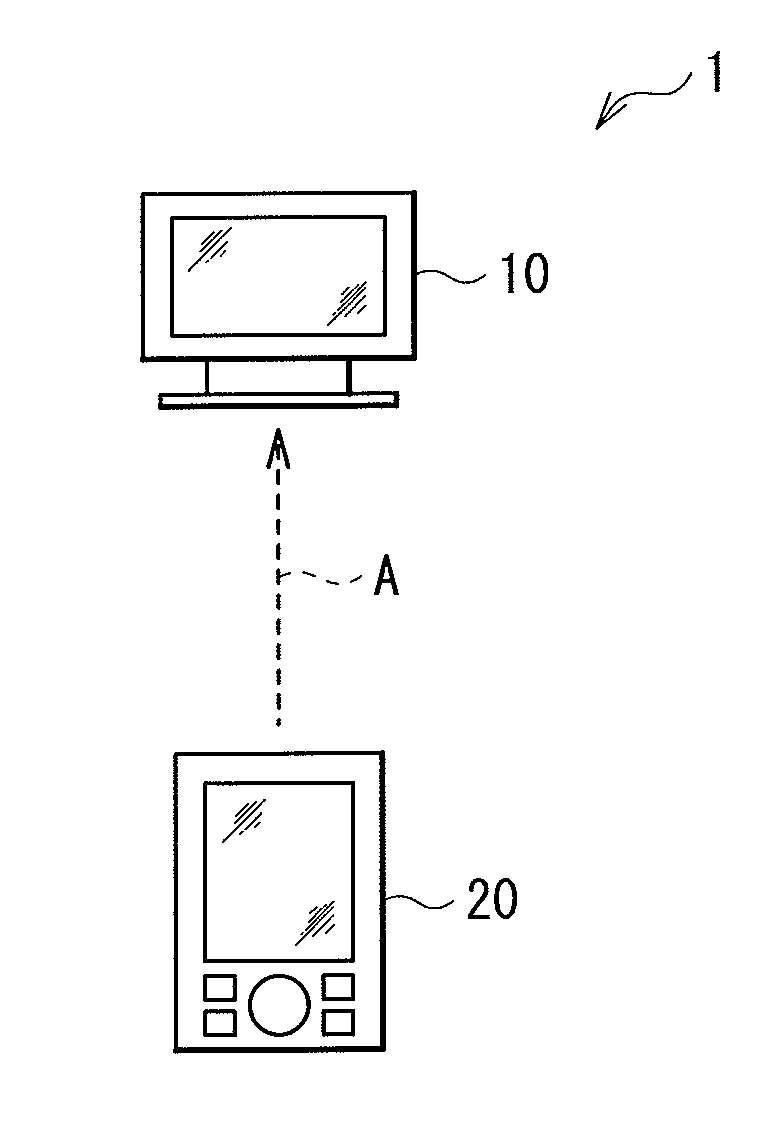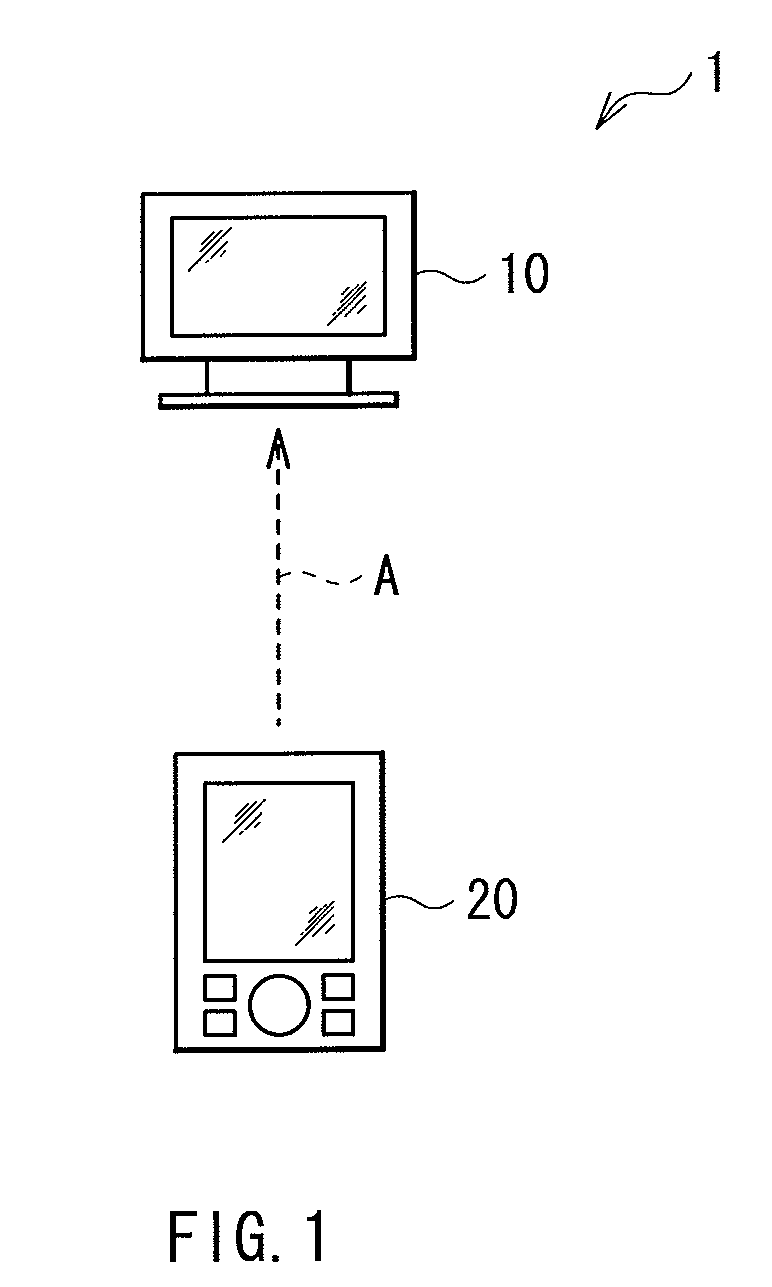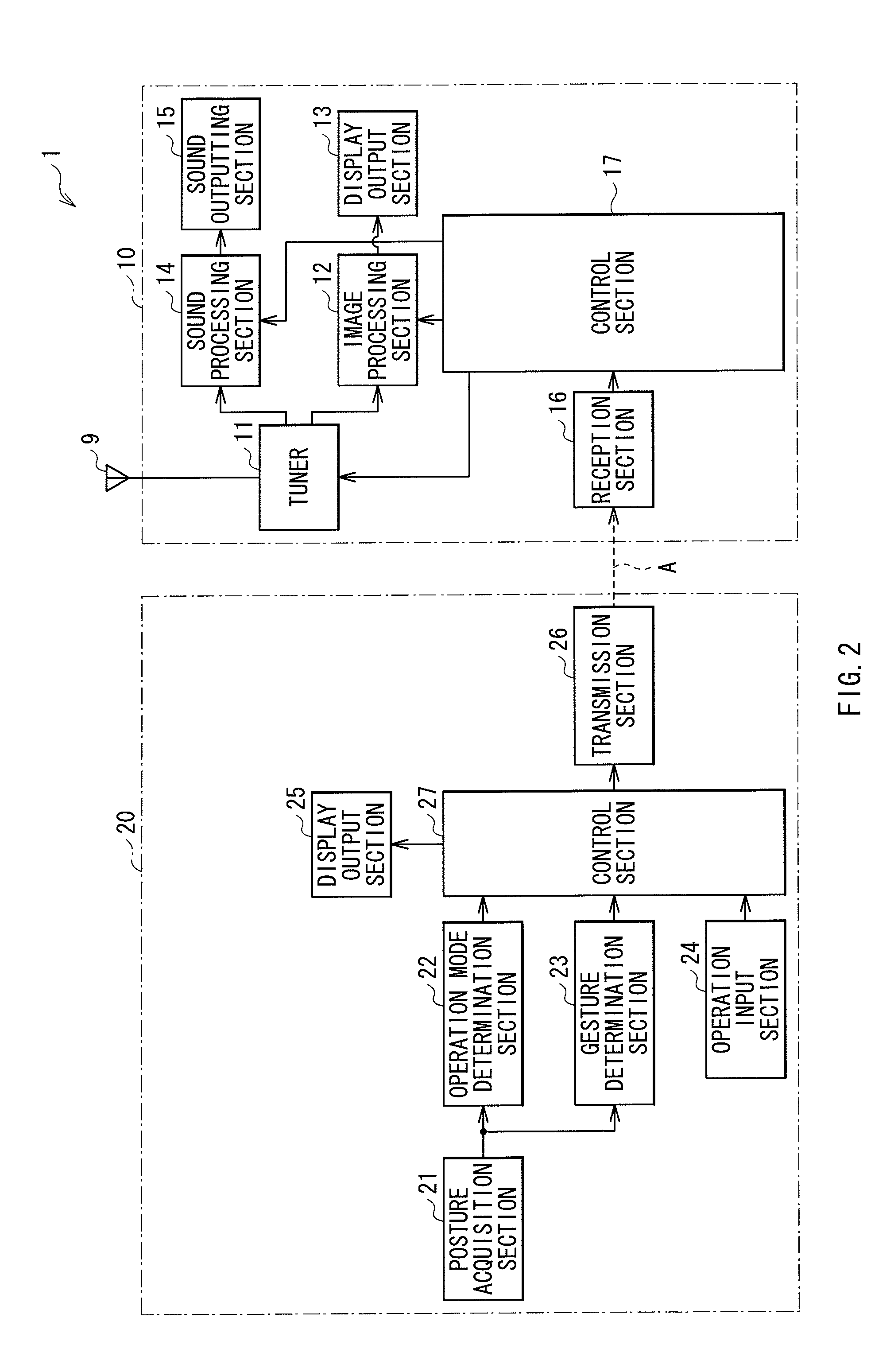Operation terminal, electronic unit, and electronic unit system
a technology of electronic units and terminals, applied in the field of operation terminals, electronic units, and electronic unit systems, can solve the problems of automatic or unintentional remote operation of electronic units, user discomfort, and change of posture, and achieve the effect of reducing the difficulty of remote operation when the user is not conscious
- Summary
- Abstract
- Description
- Claims
- Application Information
AI Technical Summary
Benefits of technology
Problems solved by technology
Method used
Image
Examples
application example
(Application Example)
[0076]FIGS. 8A and 8B illustrate application examples of the gesture motion. FIG. 8A illustrates an operation using up, down, left and right motions, and FIG. 8B illustrates an operation by a free cursor.
[0077]In the electronic unit system 1, by moving the mobile device 20 up, down, left, and right as illustrated in FIG. 8A, the remote operation of the display device 10 can be carried out. Thereby, the electronic program guide (EPG) displayed on the display device 10 can be operated, for example. It is to be noted that the gesture motion is not limited to the operation accompanied by the display on the display device 10. For example, a channel of the display device 10 may be changed by a horizontal movement, and the sound volume may be changed by a vertical movement. Further, the direction of the gesture motion is not limited to the up, down, left and right, and a diagonal movement may be included, for example.
[0078]In addition, in the electronic unit system 1, ...
modification example 1-1
[0082]In the above-mentioned embodiment, the switching of the operation mode is carried out when the change of the posture of the mobile device 20 is detected. However, this is not restrictive. An example is described below.
[0083]FIG. 9 is a flow chart illustrating a case where the switching of the operation mode is carried out according to a present modification example. Operations in steps S11 to S13 and step S15 are the same as those in steps S1 to S3 and step S4 according to the above-mentioned first embodiment (FIG. 7), respectively. That is, the flow chart of the present modification example is a flow chart in which step S14 is added to the flow illustrated in FIG. 7. Below, step S14 is described.
[0084]In step S14, the mobile device 20 checks whether the posture of the mobile device 20 is unchanged (is the same) for more than a predetermined time period. More specifically, the operation mode determination section 22 checks, by using determination results of previous operation ...
modification example 1-2
[0086]In the above-mentioned embodiment, in the gesture mode G, the mobile device 20 remotely operates only the display device 10. However, this is not restrictive. Alternatively, two devices, the display device 10 and a recording and reproducing device 70, may be remotely operated by the mobile device 20 as illustrated in FIG. 10. In this case, the two devices may be operated in the gesture mode G such that, for example, a fast-forward and a rewind of the recording and reproducing device 70 are carried out by moving the mobile device 20 left and right, and that an adjustment of a sound volume of the display device 10 is carried out by moving the mobile device 20 up and down.
PUM
 Login to View More
Login to View More Abstract
Description
Claims
Application Information
 Login to View More
Login to View More - R&D
- Intellectual Property
- Life Sciences
- Materials
- Tech Scout
- Unparalleled Data Quality
- Higher Quality Content
- 60% Fewer Hallucinations
Browse by: Latest US Patents, China's latest patents, Technical Efficacy Thesaurus, Application Domain, Technology Topic, Popular Technical Reports.
© 2025 PatSnap. All rights reserved.Legal|Privacy policy|Modern Slavery Act Transparency Statement|Sitemap|About US| Contact US: help@patsnap.com



